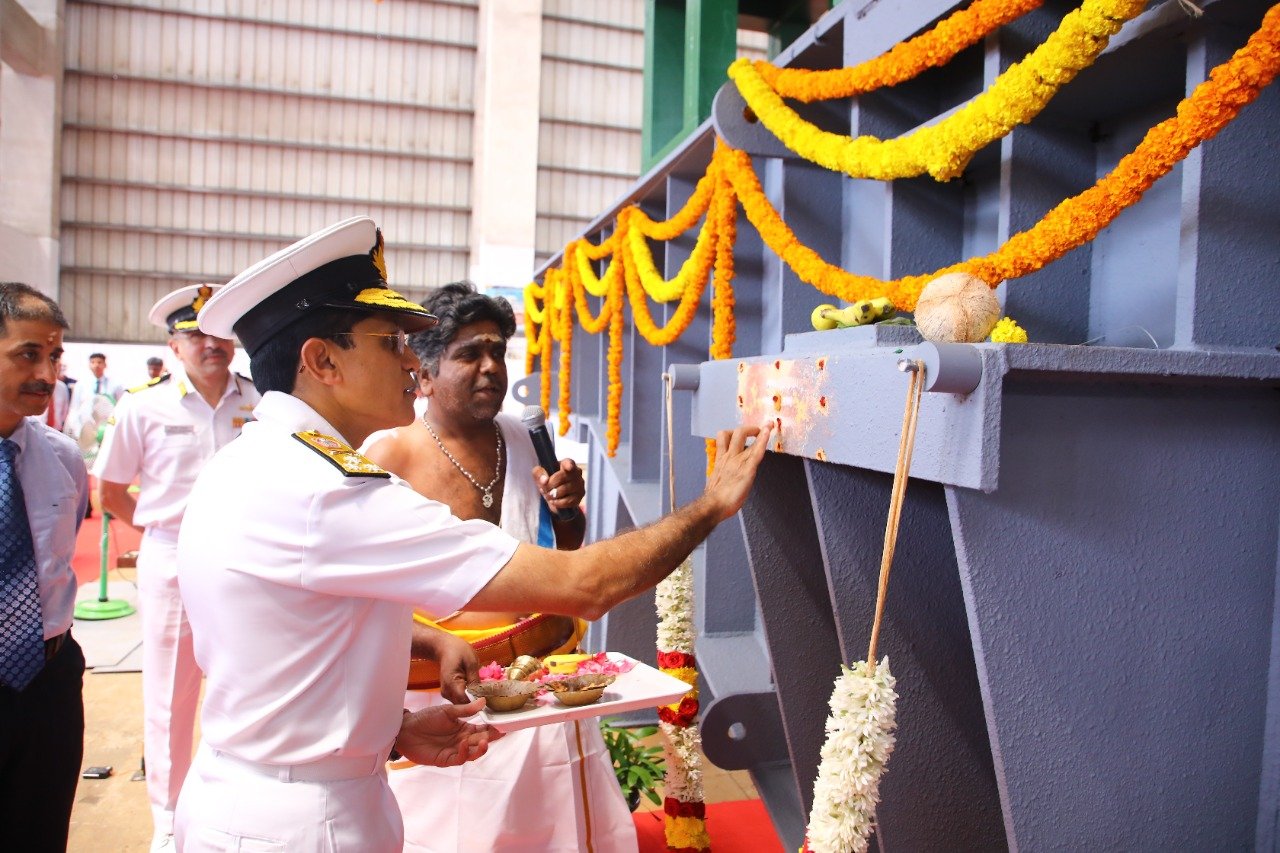According to information published by the Indian government on June 21, 2022, the keel for the fourth ship of Survey Vessel (Large) and second & third ships of ASW SWC for the Indian Navy was ceremoniously laid by VAdm SN Ghormade, Vice Chief of Naval Staff at M/s L&T, Kattupalli.
Follow Navy Recognition on Google News at this link
 Keel laying ceremony for the future Indian Navy's survey vessels (Picture source: Indian government)
Keel laying ceremony for the future Indian Navy's survey vessels (Picture source: Indian government)
The Contract for the construction of four SVL and eight ASW SWC for the Indian Navy was awarded to M/s GRSE as part of the indigenous shipbuilding program on Oct 18 and Apr 22 respectively. As part of the yard’s build strategy, GRSE has subcontracted part construction of three ships of SVL and four ships of ASW SWC to M/s L&T, Kattupalli.
Keel Laying is a major milestone activity in the construction of ships, symbolizing the formal commencement of the erection process of the warships on the building berth.
Survey Vessel Large (SVL) ships are capable of the full-scale coastal survey, deep-water Hydrographic survey, and determination of navigational channels/ routes.
In addition, these platforms collect Oceanographic and Geophysical data for Defence applications. State-of-the-art equipment such as Autonomous Underwater vehicles (AUVs), Remotely Operated Vehicles (ROV), Single/ Multi-Beam Echo Sounders, and Data Acquisition and Processing systems (DAPS) are fitted onboard SVL vessels to increase the ocean research capability.
VCNS during the event highlighted that the ASW SWC platforms will augment the Navy’s ASW capability and serve as a deterrent against submarine threats.
Armed with torpedoes, rockets, state-of-the-art Hull Mounted Sonar (HMS), and Low-Frequency Variable Depth Sonar (LFVDS), the ASW SWC ships will significantly enhance the Indian Navy ASW capability.
The ships have a displacement of 3,300 tonnes (3,248 long tons) and a length of 110 meters (360 ft 11 in). They have a cruising speed of 16 knots (30 km/h; 18 mph) with a maximum speed of 18 knots (33 km/h; 21 mph) and an operating range of 6,500 nautical miles (12,000 km; 7,500 mi) at a speed of 14 to 16 knots (26 to 30 km/h; 16 to 18 mph).
The ships have a complement of 231 and are equipped with hydrographic sensor equipment and a hangar that can accommodate one advanced light helicopter.



